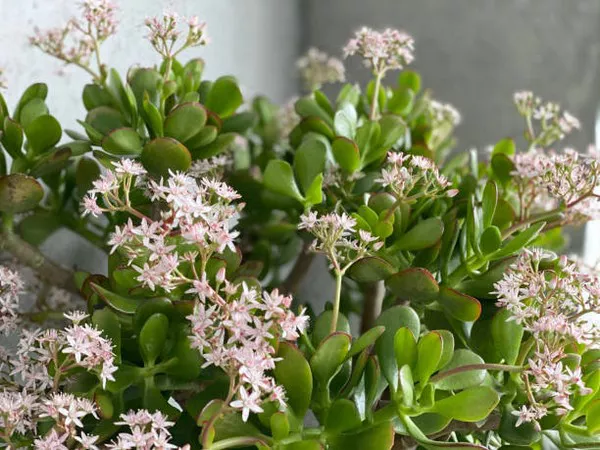The botanical world is a mesmerizing tapestry of colors, shapes, and fragrances, with flowering plants standing out as some of nature’s most captivating creations. In this comprehensive exploration, we delve into the fascinating realm of plants that produce flowers, unraveling the diversity that makes them an essential and enchanting component of our natural environment.
The Botanical Ballet: Understanding Flowering Plants
Flowering plants, also known as angiosperms, constitute the largest and most diverse group within the plant kingdom. Their defining feature is the production of reproductive structures called flowers, which are not only aesthetically pleasing but also crucial for the plant’s reproductive cycle.
Classification of Flowering Plants
The classification of flowering plants is a complex task, considering the vast number of species and their varied characteristics. Botanists categorize angiosperms into two main groups:
1. Monocots: These plants typically have one cotyledon (seed leaf), parallel leaf venation, and floral parts in multiples of three (e.g., lilies, orchids, and grasses).
2. Dicots: With two cotyledons, reticulate leaf venation, and floral parts in multiples of four or five, dicots encompass a broad range of plants, including roses, sunflowers, and oak trees.
Within these broad categories, flowering plants further branch into numerous families, genera, and species, each with its unique characteristics and adaptations.
A Symphony of Shapes and Colors: The Variety of Flowers
Floral Structures and Anatomy
The exquisite beauty of flowers lies in their intricate structures and diverse arrangements. Understanding the anatomy of a flower provides insights into its reproductive function. Key floral components include:
Sepals: Outermost floral organs that protect the developing bud.
Petals: Colorful structures that attract pollinators with their vivid hues and patterns.
Stamens: Male reproductive organs, consisting of anther and filament, where pollen is produced.
Pistil (or Carpels): Female reproductive organ, comprising stigma, style, and ovary, where ovules develop into seeds.
Types of Inflorescence
The arrangement of flowers on a plant, known as inflorescence, adds another layer of diversity. Some common types include:
Spike: Flowers arranged along a central axis.
Raceme: Flowers attached to the main stem by individual stalks.
Umbel: Numerous flower stalks originating from a common point.
Panicle: Branched inflorescence with smaller clusters of flowers.
Adaptations and Survival Strategies
Pollination Mechanisms
Flowering plants have evolved various mechanisms to ensure successful pollination, a crucial step in their reproductive process.
Some rely on wind, while others depend on animals like bees, butterflies, birds, or even mammals to transfer pollen between flowers. Coevolution between plants and their pollinators has led to the development of specific adaptations, such as the vibrant colors and enticing fragrances that attract pollinators.
Reproductive Strategies
To enhance their chances of survival, flowering plants have developed diverse reproductive strategies. Some species produce copious amounts of tiny, easily dispersed seeds, ensuring widespread distribution. Others invest energy in producing fewer, larger seeds with a higher chance of successful germination. This variety of approaches reflects the adaptability of flowering plants to a wide range of ecological niches.
Noteworthy Families and Their Characteristics
1. Rosaceae: The Rose Family
The Rosaceae family is renowned for its economically and aesthetically important members, including roses, apples, and strawberries. Members of this family typically have five-petaled flowers and are widespread in temperate regions.
2. Orchidaceae: The Orchid Family
Orchids, with their diverse and often intricate flowers, are the largest family among flowering plants. Known for their unique reproductive strategies, such as mimicry and coevolution with specific pollinators, orchids thrive in diverse ecosystems worldwide.
3. Asteraceae: The Aster Family
Commonly referred to as the aster or daisy family, Asteraceae includes sunflowers, daisies, and asters. Characterized by composite flower heads, this family is one of the largest and ecologically significant groups of flowering plants.
4. Fabaceae: The Legume Family
Legumes, such as peas, beans, and clover, belong to the Fabaceae family. Known for their nitrogen-fixing abilities, legumes play a crucial role in soil fertility. Their distinctive pea-shaped flowers and compound leaves are key characteristics of this family.
Human-Plant Interactions: A Symbiotic Relationship
Cultural and Aesthetic Significance
Beyond their ecological roles, flowering plants hold immense cultural and aesthetic significance for humans. From ancient symbolism to modern horticulture, flowers have been integral to art, literature, and rituals, enriching human experiences with their beauty and symbolism.
Economic Importance
The economic importance of flowering plants cannot be overstated. Many provide essential resources such as food, medicine, and raw materials. Crops like wheat, rice, and corn are staples of human diets, while medicinal plants contribute to pharmaceutical advancements. Additionally, the ornamental plant industry generates significant revenue globally.
Challenges and Conservation Efforts
Habitat Loss and Climate Change
Despite their resilience, flowering plants face threats from habitat loss, climate change, and invasive species. Rapid urbanization, deforestation, and alteration of natural landscapes impact plant populations and disrupt ecosystems. Understanding these challenges is crucial for developing effective conservation strategies.
Conservation Initiatives
Conservation efforts are underway globally to safeguard the rich biodiversity of flowering plants. Establishing protected areas, seed banks, and promoting sustainable land management practices are essential components of these initiatives. Public awareness and education about the importance of preserving plant diversity also play a crucial role in conservation.
Conclusion
In conclusion, the world of flowering plants is a symphony of diversity, adaptation, and beauty. From the microscopic intricacies of floral anatomy to the macroscopic impact on ecosystems and human culture, flowering plants are integral to life on Earth. As stewards of this planet, understanding, appreciating, and conserving this botanical diversity is not just a scientific endeavor but a responsibility for future generations. By embracing the floral symphony, we ensure a harmonious and sustainable coexistence with the breathtaking variety of flowering plants that grace our planet.


